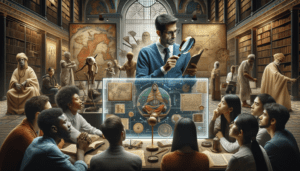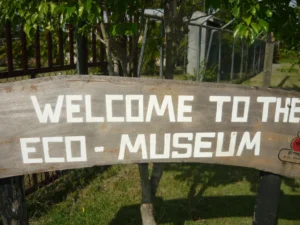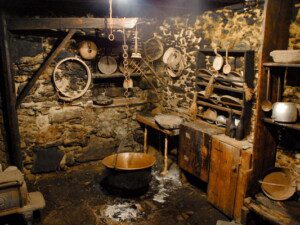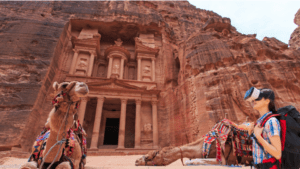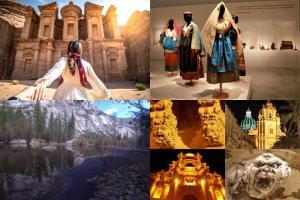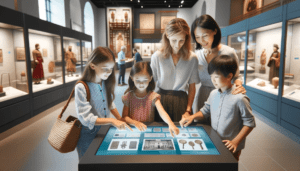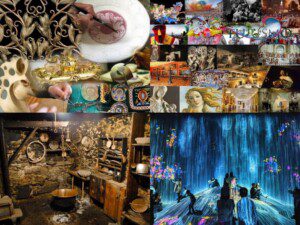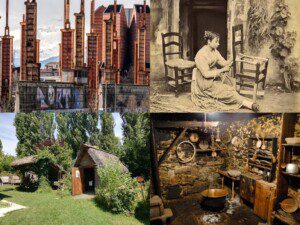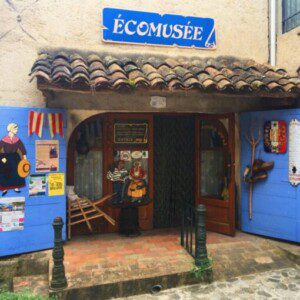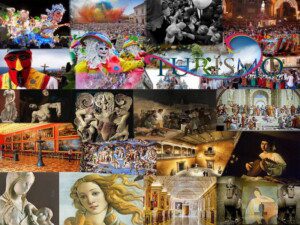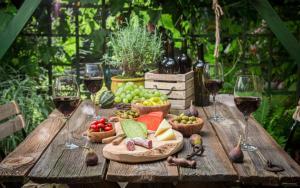The “Fathers” of the concept of Interpretation
by Ignazio Caloggero
Reference Page: Special Heritage Interpretation (Heritage Interpretation)
It was in the United States, towards the middle of the XNUMXth century, that what was called "Environmental Interpretation" was born, thanks to the growth of interest in the problems of protecting the natural heritage which would lead to the creation of the first national park in the world, the Yellowstone National Park, established by President Ulysses Grant in 1872. Other national parks would follow Yellowstone before the end of the XNUMXth century: Sequoia National Park (1890) Yosemite National Park (1890) and Mount Rainier National Park (1899)
Sensitivity towards the protection of natural heritage was favored by the development of philosophical and poetic movements such as that of American Transcendentalism, which included charismatic figures such as Ralph Waldo Emerson (1803-1882) and his friend and disciple Henry David Thoreau (1817-1862).
And it is precisely in this cultural context that the first forms of environmental tourism began to spread in the second half of the 1864th century thanks to the spread of the first protected natural areas in the world, including Yosemite Park (1890) which later, in XNUMX, became National.
So the concept of Interpretation was born in the environmental sphere and only later was this concept seen in a broad sense, identifying the entire Cultural Heritage as a sphere.
Among the main players that gave rise to the concept of Interpretation we should mention: John Muir (1838-1914), Liberty Hyde Bailey (1858-1954), Enos A. Mills (1870-1922) and Charles Matthias Goethe (1875-1966). Even if he is traditionally recognized as the father of environmental interpretation, at least as regards the formal aspects, Freeman Tilden (1883-1980), thanks to the publication of the book "Interpreting our heritage" in 1957.
John Muir (1838 – 1914)

John Muir (1838 – 1914), naturalized American Scottish naturalist and writer and one of the first modern conservationists. A great friend of President Theodore Roosevelt, he wrote many books on nature, especially illustrating the wild nature of the Sierra Nevada mountains in California, both scientific and popular. His direct activism helped preserve Yosemite Valley and other wilderness areas. The association Sierra Club, which he founded, was the first American environmental association. His writings and his philosophy greatly influenced the shaping of modern environmental science. He was the promoter of the nascent Conservationist movement which took positions regarding the ethical and philosophical vision of the environmental heritage, seen by some as a heritage to be preserved uncontaminated, and by others instead as a resource to be conserved and carefully managed for the use and benefit of humanity[1].
Muir is credited with being the first to use the term "interpretation” to describe the work of outfitters, teachers and naturalists in his notebook used in Yosemite.
I will interpret the rocks, I will learn the language of flood, storm and avalanche. I will know the glaciers and the wild gardens and I will get as close as possible to the heart of the world (John Muir, 1896) [2].
[1] Marta Brunelli: Heritage Interpretation – Eum University of Macerata editions – 2014 pag. 41
[2] Foundations of Interpretation Competency Narrative – National Park Service US Department of the Interior – pag. 1
***
Liberty Hyde Bailey (1858-1954)

Liberty Hyde Bailey (1858-1954), US horticulturist and botanist, promoter of Nature Study Movement which proposed a new educational ideal based on nature understood as an object of study, as a learning environment and as a source of a didactic methodology of the natural sciences on informal and experiential learning, which would form the basis of future environmental education.
Liberty Hyde Bailey argued that among the teaching subjects, horticulture had to be privileged compared to other subjects, as it would have contributed to a greater civic sense as well as a technical knowledge of the manifestations of nature in order to be able to operate on it with intelligence and respect .
Among the many books written by him, the volume "The Nature study idea: an interpretation of the new school-movement to put the child into relation and sympathy with Nature, published in 1909", should certainly be mentioned, where the second chapter is dedicated to the " poetic interpretation of nature": here interpretation is understood as the way in which men read reality, guided by their own subjective attitude towards the world[1].
[1] Marta Brunelli: Heritage Interpretation – Eum University of Macerata editions – 2014 pag. 50
***
Enos Abijah Mills (1870-1922)

Enos Abijah Mills (1870-1922), American naturalist, author, and farm owner, was the primary figure behind the creation of Rocky Mountain National Park. Mills is the author of numerous articles and books on nature and the Estes Park area, beginning in the first decade of the XNUMXth century. His talks generally focused on tree life, forestry issues, the conservation of natural lands, and the life of wild animals. Often in speeches and written articles he has encouraged people of all ages to get out and about immerse yourself in nature.
He founded the first school of naturalist guides after having himself served as a guide to the various guests of his farm. In his school he applied a methodology that relied on direct participation on the part of the learners and on the ability to transform facts into narration, data into narration, essentially a poetic and narrative methodology of environmental interpretation and which today is known as storytelling
His enthusiasm for conservation flourished during a serendipitous friendship. While walking on the beach near San Francisco he asked an elderly man about a piece of seaweed he had found. The passerby was alone John Muir and his response to Mills' questions started a lasting bond between the two. Muir encouraged Mills to join the conservation movement and write about his adventures. His book "The adventures of a nature guide and essays in interpretation" published in 1923 is considered one of the most significant books in the field of interpretation literature.
***
Charles Matthias Goethe (1875-1966)

Charles Matthias Goethe (1875-1966), entrepreneur, scientist, philanthropist and environmentalist and founder of the Eugenics Society of Northern California.
Goethe collaborated with various organizations, including John Muir's Sierra Club. She and his wife started a series of interpretive programs in partnership with the National Park Service.
Active in the conservationist cause, Goethe was also deeply involved in the issues of education and care for abandoned children.
During a series of trips to Europe with his wife Mary between 1911 and 1912, he was able to observe the educational work conducted by a young teacher on an excursion with her pupils to Lake Lucerne. After that meeting, the two explored the European methodologies of nature study and school excursions into nature, as they had developed in Germany, Norway, Holland, Great Britain and Denmark: hence, the decision to replicate them on American soil. Having identified the location of Lake Tahoe, they founded what would become the "Lake Tahoe Laboratory", in which they called Miller and Bryant to serve as naturalistic guides[1].
Like Bailey, Goethe was a promoter of educational didactics based onlearning informal and experiential.
[1] Marta Brunelli: Heritage Interpretation – Eum University of Macerata editions – 2014 pag. 64
***
Freeman Tilden (1883-1980)

Freeman Tilden (1883-1980), journalist, writer and playwright, decided he needed a change in his life at the age of 58. When his friend National Park Service Director Newton Drury invited him to work with the National Park Service, he entered the field of interpreting and changed the profession forever. Traveling to various parks to write books on the national park system, he addressed the quality of the parks' interpretive programs.
Tilden is considered the father of interpretation, thanks to his famous book "Interpreting our heritage" published for the first time in 1957 and subsequently in various editions. In Italy, for those wishing to approach the study of interpretation, the edition published in 2019 in Italian, translated by Vanessa Vaio, is very useful: Freeman Tilden: Interpreting our heritage - Italian edition of 2019 - Geographic Library.
In his book Tilden, he consolidated the theoretical, methodological and didactic foundations, establishing the principles and theories of Cultural Heritage Interpretation and emphasizing the experiential importance in interpretation paths.
Tilden also provided the first formal definition of Interpretation:
Interpretation (Freeman Tilden – 1957)
“Educational activity that aspires to reveal meanings and relationships through the use of original objects, first-hand experiences and exemplifying means, rather than the mere transmission of facts”[1]
Freeman Tilden's Principles of Interpretation[2]
- Any interpretation that does not relate what is illustrated or exhibited to an aspect of the personality or with the visitor experience will be sterile.
- Information itself is not interpretation. Interpretation is revelation based on information. But they are two entirely different things, although all interpretation includes information. However, every interpretation activity contains information.
- Interpretation is an art that combines others, whatever the subject exposed: scientific, historical, architectural. And to some extent, any art can be taught.
- The main purpose of interpretation is not to educate but challenge.
- The interpretation should aspire to present it all rather than a part and should address man as a whole rather than just one stage of his development.
- The interpretation aimed at children (up to about 12 years) should not be a dilution of what is proposed to adults, but have a altogether different approach. It will require specific and separate programs for the best
[1] Freeman Tilden: Interpreting our heritage – 2019 Italian edition – Geographical Library p. 29
[2] Freeman Tilden: Interpreting our heritage – 2019 Italian edition – Geographical Library p. 31
To learn more about the topics covered in this article:
Experiential Pathways and Cultural Heritage Interpretation Vol. 1: Origins and Theoretical Principles (free downloadable volume)
- SPE200: Foundations and Practices of Experiential Tourism (16 hours online): This course aims to promote experiential literacy by introducing the fundamental principles of experiences and demonstrating, through practical examples, their application in the experiential tourism sector.
- SPE201: Fundamentals and Practices of Heritage Interpretation (16 hours online): This course aims to promote a holistic approach to the valorization of the territory, introducing the fundamental principles of the experiences and interpretation of cultural heritage. Through practical examples, it will be illustrated how these principles are implemented in the context of Heritage Interpretation.
The two courses can be used as part of the project:
Project "Experiential Tourism and Interpretation of Cultural Heritage"
Featured training
Basic courses
Thematic courses on the Design of Experiences
Courses with Professionalizing Certification pursuant to Law 4/2013





